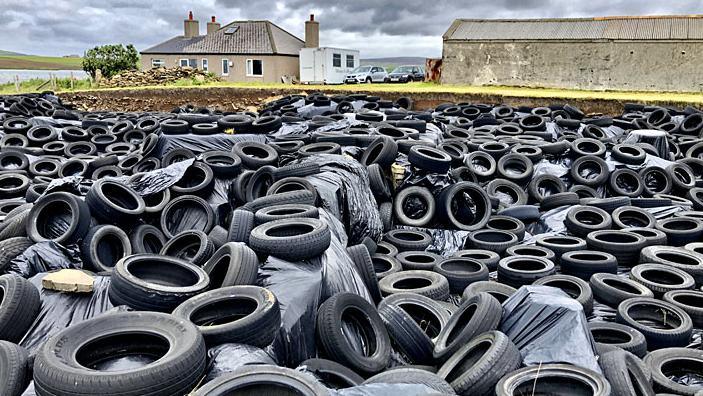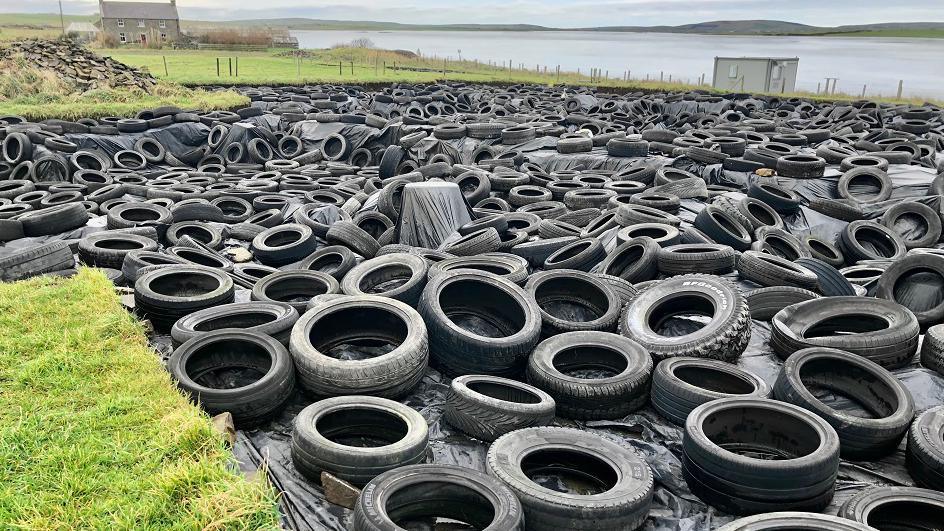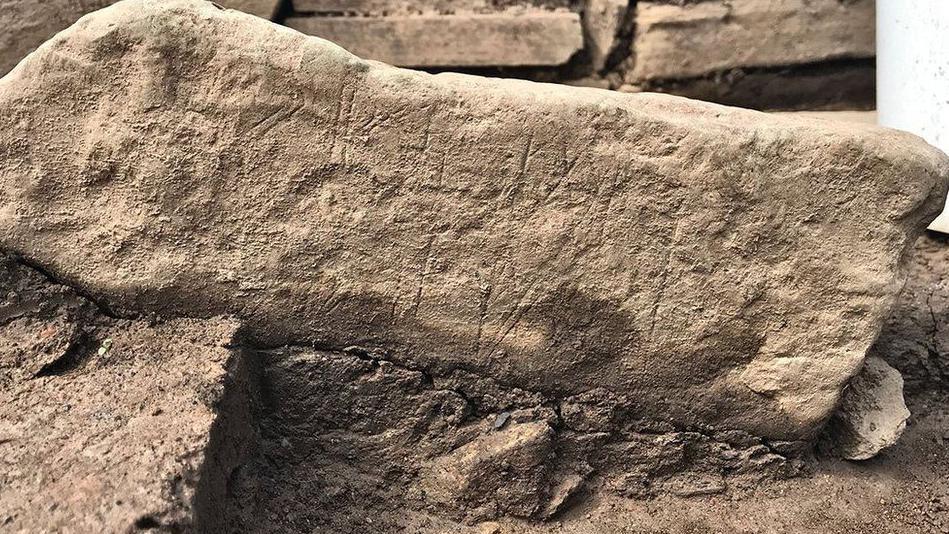Call for help moving 500 old tyres to protect Neolithic site

The site covered in plastic sheets and old tyres after a previous dig
At a glance
Volunteers are wanted to help protect an archaeological site in Orkney from bad weather
The area needs to be covered by hundreds of square metres of plastic sheets, held in place by 500 old tyres
Ness of Brodgar is 5,000 years old and in the Heart of Neolithic Orkney World Heritage Site
- Published
Islanders are being asked to help move 500 tyres to protect a 5,000-year-old prehistoric site.
Archaeologists have been excavating Ness of Brodgar, a complex of buildings in the Heart of Neolithic Orkney World Heritage Site, since 2006.
After each "season" of digs, the site is carefully covered over with huge plastic sheets which are held in place using worn-out tyres.
The covering protects unearthed areas of the site from bad weather over autumn and winter.

Archaeologists get the tyres from local garages
Ness of Brodgar is the University of the Highlands and Islands (UHI) Archaeology Institute's flagship excavation site.
In recent years, important finds have included human bones, decorated stones and what archaeologists believe to be a potter and his apprentice's fingerprints on a fragment of pottery.
Ness of Brodgar is the source of the largest collection of late Neolithic Grooved Ware pottery in the UK.
The site's stone-built structures need to be protected against damage from bad weather.
Volunteers have been asked to help cover over a 750 sq metre (8,073 sq ft) area later this month. UHI said in previous years the area to be covered has been three times that size.

Finds at the site have included stones decorated by people in Neolithic times
The tyres come from local garages and UHI has a licence from the Scottish Environment Protection Agency to use them.
Sigurd Towrie, of Archaeology Institute UHI, said: "The tyres serve two purposes - they hold down the protective covers that envelope each trench and offer a degree of support for more fragile areas."
He said this was crucial during a windy Orcadian winter.
"The site has to be covered over for its protection.
"Much of the stone used in the construction of the buildings back in the Neolithic laminates when exposed to the elements for any length of time.
"So the stone must be covered as well as the trench edges and the interior floors of each building. Sandbags are also used to provide support to particularly fragile areas of the site."